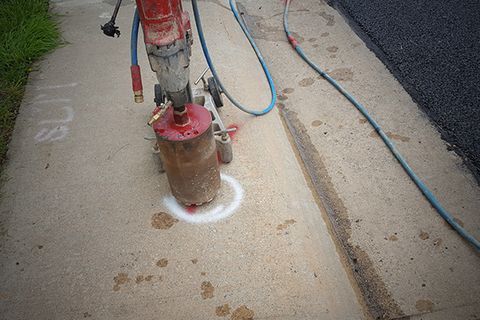Subsurface Investigation
Subsurface investigation is required to verify the location and depths of utilities in a new bore path or other excavations. This process is performed to verify the utility locates and plan excavations so that damages to existing utilities are avoided. Municipalities and utility owners have guidelines for how much clearance is required for placement of new utilities. For example, Xcel energy requires a new facility to be a minimum of two feet over or three feet under any existing electrical facility. Potholing it the primary method for performing this investigation.
In addition to performing potholing services as needed on all of our excavation projects, we offer hourly potholing services to other excavators, engineers, and planners in need of these services for their projects.
We can also provide restoration landscape, asphalt, and concrete where potholing has been performed. Generally, restoration is limited to a patch of the 8" core required for the pothole. However, in some cases additional restoration may be required by the property owners or municipalities. We will make arrangements to ensure that al surfaces are restored to the satisfaction of your customer as well as the public right of way inspectors.

The Investigation Process
Potholing is a method using a truck or trailer mounted vacuum system and water jet to expose existing underground utilities and other obstacles in order to determine their location, depth, size, and condition.
A small hole in the ground, or core in asphalt or concrete (generally about 8" in diameter) is created above the utility marks. Then a non-destructive hydro jet is used to break apart the soil which is removed with vacuum suck hoses. Once the utility is uncovered, our crew is able to visually inspect the utility so that the size, type, and depth can be recorded into a log.
Potholes are generally backfilled with a crushed rock or squeegee and topped with the original soil or, in the case of the asphalt and concrete cuts, a temporary cold patch will be placed. Customers may arrange for their own final restoration if they are doing other site work. Otherwise, L & M will send crews back to perform the final concrete and asphalt restoration.
